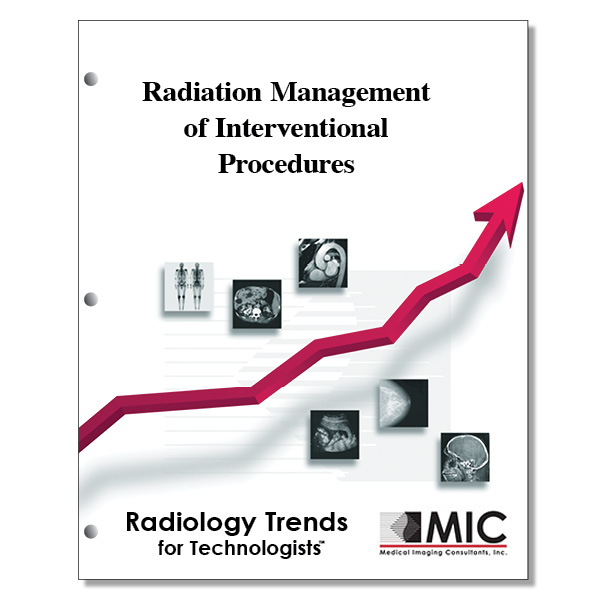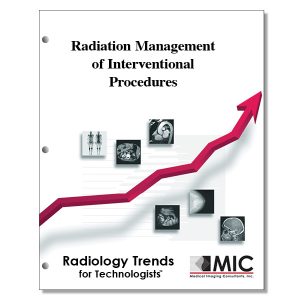

Radiation Management of Interventional Procedures
Techniques for managing the radiation dose during fluorosopically-guided interventional procedures.
Course ID: Q00331 Category: Radiology Trends for Technologists Modalities: Radiography, Vascular Interventional3.25 |
Satisfaction Guarantee |
$34.00
- Targeted CE
- Outline
- Objectives
Targeted CE per ARRT’s Discipline, Category, and Subcategory classification for enrollments starting after June 11, 2024:
Cardiac-Interventional Radiography: 3.25
Image Production: 3.25
Image Acquisition and Equipment: 3.25
Radiography: 3.25
Safety: 3.25
Radiation Physics and Radiobiology: 0.75
Radiation Protection: 2.50
Registered Radiologist Assistant: 3.25
Safety: 3.25
Patient Safety, Radiation Protection, and Equipment Operation: 3.25
Vascular-Interventional Radiography: 3.25
Image Production: 3.25
Image Acquisition and Equipment: 3.25
Outline
- Introduction
- Radiation Effects
- Principles of Radiation Protection
- Radiation Dose Estimation
- Radiation Management in Interventional Procedures
- Before the Procedure
- Procedure Planning
- During the Procedure
- After the Procedure
- Quality Assurance and Quality Improvement
Objectives
Upon completion of this course, students will:
- understand how many FGI procedures are performed
- understand why FGI procedures have increased over the years
- understand the biologic effects from radiation exposure
- explain dose optimization
- understand radiation monitoring and recording of dose
- know what portion of the fluoroscope allows for high definition
- relate stochastic injury to genetic transformation
- understand stochastic injury in the pediatric population
- know time frame of stochastic radiation effects
- relate severity of deterministic effects to radiation dose
- understand patient outcomes from deterministic radiation injury
- understand ICRP fundamental principles
- define ICRP principle of optimization
- understand application of the ICRP principle of optimization
- understand special metrics for radiation dose estimation
- relate peak skin dose to primary beam and scatter
- be familiar with pre-procedure factors that help estimate the severity and likelihood of radiation effects
- understand what patient population has the lowest risk for radiation-induced cancer
- understand which patient population is more at risk for stochastic effects
- understand which patient population is more at risk for deterministic effects
- be familiar with diseases and their relationship to sensitivity to radiation
- understand connection between deterministic effects and FGI procedure factors
- compare latency period and cataract formation
- understand time needed between FGI procedures
- know alternate imaging modalities for pregnant patients
- know procedure modifications for pregnant patients undergoing FGI procedures
- understand the physicist inspection requirements of radiation-generating equipment
- be familiar with adjusted technical parameters and their affect
- understand fluoroscopic options to reduce patient radiation
- be familiar with professionals that can make adjustment to the fluoroscope
- be familiar with techniques to reduce peak skin dose
- know how to reduce radiation dose to the eye during FGI procedures
- be familiar with radiation management responsibilities
- relate threshold value and additional dose management
- understand the importance of radiation dose notification during the procedure
- relate threshold amount and sentinel events
- be familiar with recordable procedure radiation data
- understand operator actions when a significant radiation dose has been administered
- know primary goal of radiation management in interventional radiology
- relate fluoroscopic equipment function to practice results
